We have gotten used to two big Samsung phone releases per year. The Galaxy S series in February, and the Galaxy Note series in August. These phones are some of the best on the market, with high end designs, mature software, and recently a high price to match. This year Samsung released the 11th Galaxy S line of phones in the Galaxy S20, the company has been making the Galaxy S series for 10 years now. Samsung’s first “Galaxy S” phone was released in 2010, and it was my first Android phone. The specific phone I had was the Samsung Galaxy S Vibrant on Bell Mobility, and it released on August 6, 2010, almost exactly 10 years ago.
I still have that phone, and I thought it would be really fun to take a look back at the phone, compare it to my 2019 era Galaxy Note 10+, and see how far smartphone design has come in 10 years.
Now, I had grand visions of spending time trying to use the Galaxy S Vibrant (I’m just going to call it Vibrant from now on), at least on Wifi at home. The last time I turned it on a couple years ago it was still working, and actually served as kind of a neat time capsule as to what I had on my phone all those years ago. Sadly, while the phone turned on, about 45 seconds after it got to the home screen a bunch of errors popped up, the device rebooted, and….. that was it. It is stuck in a boot loop on the loading animation and even a factory reset is failing. Looking around old internet posts from 2011 or so it appears that there is some corruption in the device operating system. While I could probably fix it by reloading the operating system through a Windows app, actually finding a copy of that operating system has proven to be a challenge I haven’t been able to overcome. I’ll talk more about this later but Bell’s variant of the phone was kind of niche, which complicated matters. So instead of a deep dive into Android 2.3.3 Gingerbread, we can talk about hardware and the phone itself.
A Galaxy of Phone Variants
10 years is a very very long time in technology products, but also in the cellular providers and the business model the industry operated. While today there is generally one phone model that works around the world, in 2010, that wasn’t the case. Wireless carriers had more control over the phones on their networks, and the types of phones, and for the first two versions of the Galaxy S, there were many different versions of the phone that all had different physical appearances and names. There was even a version of the Galaxy S and Galaxy S II that had slide out keyboards All 4 large carrier networks in the US had different models, there was a model that was available in most European markets, and in Canada, Rogers used the same model that was available on AT&T in the US, while Bell went a different way and had a variant of the international model. This phone looked like the model sold in Europe, but was different internally to work on Bell’s network at the time, which featured a mix of GSM and CDMA technologies. There were so many variants of the phone it became a nightmare to market and deal with. It got so crazy that the second generation of Galaxy S phones produced what remains the most absurd phone name ever: the “Sprint Samsung Galaxy S II Epic 4G Touch.”. We have come a long way.
The Vibrant represented the best of the best of the time. The screen was massive, bright, vibrant (heh), the phone was fast, had a good amount of storage, a great camera, and a big battery. The display was the star of the show, as it was the first phone with what Samsung called a Super AMOLED display. AMOLED displays are still common in high end phones today, and while the newer AMOLED displays are infinitely better, the screen on the Vibrant still looks good, even today. But the actual hardware specifications compared to today are almost laughable. Here is a comparison between the Galaxy S Vibrant from 2010 and the Galaxy Note 10+ from 2019.
The screen on the vibrant is just over half the size of the Note 10+, there are about 70% fewer pixels, It had about 6% of the storage, about 6% of the total ram, charged its battery at about 11% of the speed, which is fine since the battery had about 35% of the capacity. The cellular speeds were 4% as fast, and the wifi was about 20% as fast.
The camera was another thing that was amazing at the time. Sure, everyone knew digital cameras took better pictures, and most of the time I ventured out I also had a dedicated camera with me (side note: remember when we took cameras to bars?). I can only find a couple dozen pictures taken with the phone, and not many of those are pictures I can post publicly, so here are a couple sample shots. I will say, in decent lighting, the photos aren’t bad. They are nowhere near as good as a phone camera today, but they’re usable. Low light pictures…. are not.







The physical device is plastic-tastic. Compared to the giant slab of glass and metal that is the Galaxy Note 10+ it feels very cheap, but that was what phones were at the time. Samsung was very much in a “copy the iPhone” mode here, to the point that Apple eventually sued Samsung for the hardware and software design. The physical home button looks very much like an iPhone home button, and the capacitve back and menu buttons were invisible until tapped, in which case they lit up. And yes, physical back and menu buttons! Android had a back button as standard until 2019, and some phones still ship with a back button as part of the navigation, but the menu button went away in 2014 with the release of Android 4.0.
The back of the device features the single back facing speaker, which is super weird, and the camera with no flash module. The back of the phone can be removed, which gives you access to the MicroSD card slot, the SIM card slot, and the removable battery. Remember removable batteries? The top featured the headphone jack and MicroUSB charging port, which was actually behind a little sliding door. The sides have the very shallow power and volume buttons, and the bottom is clean, except for the mic hole.
A Galaxy sized leap
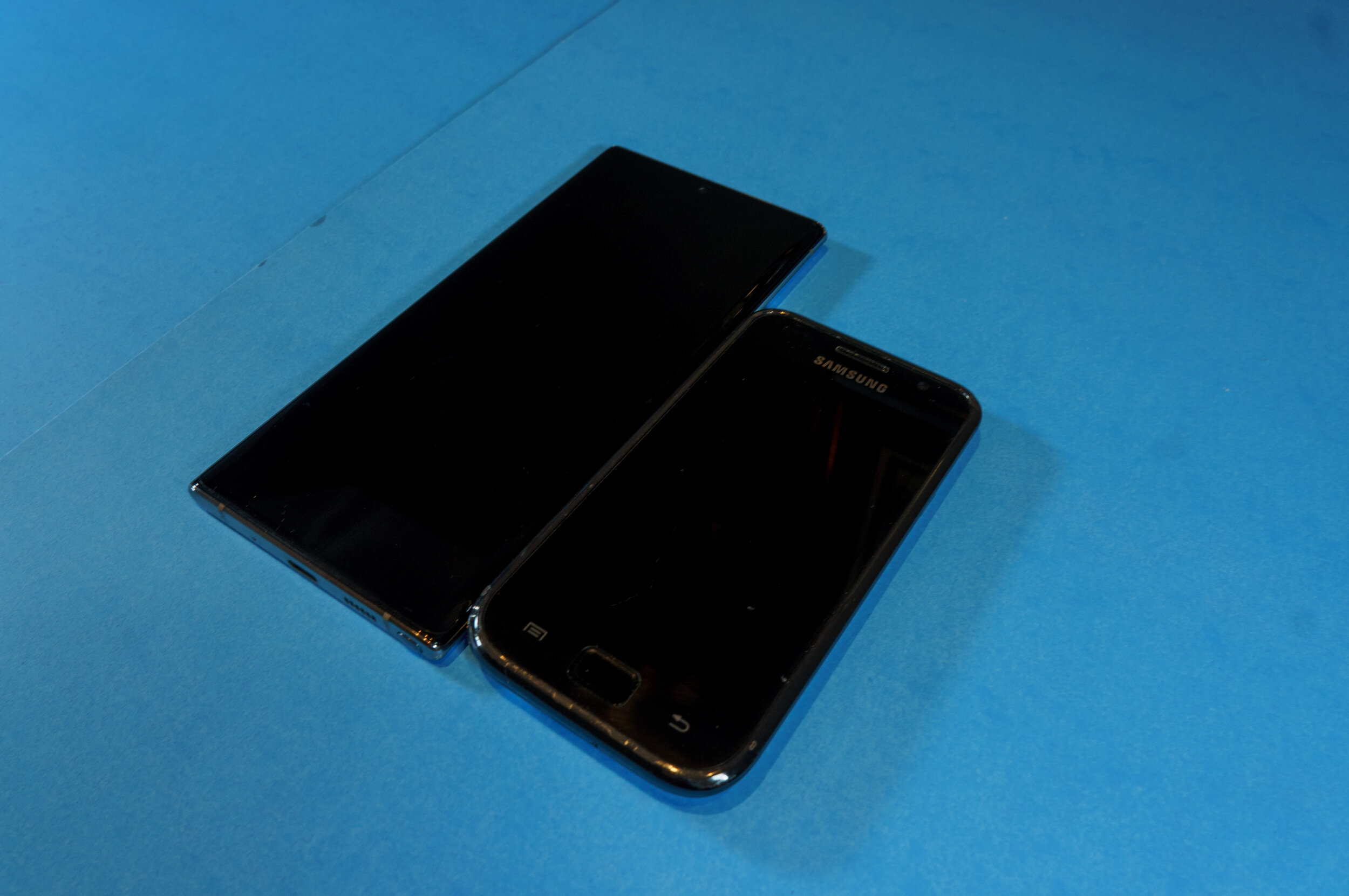
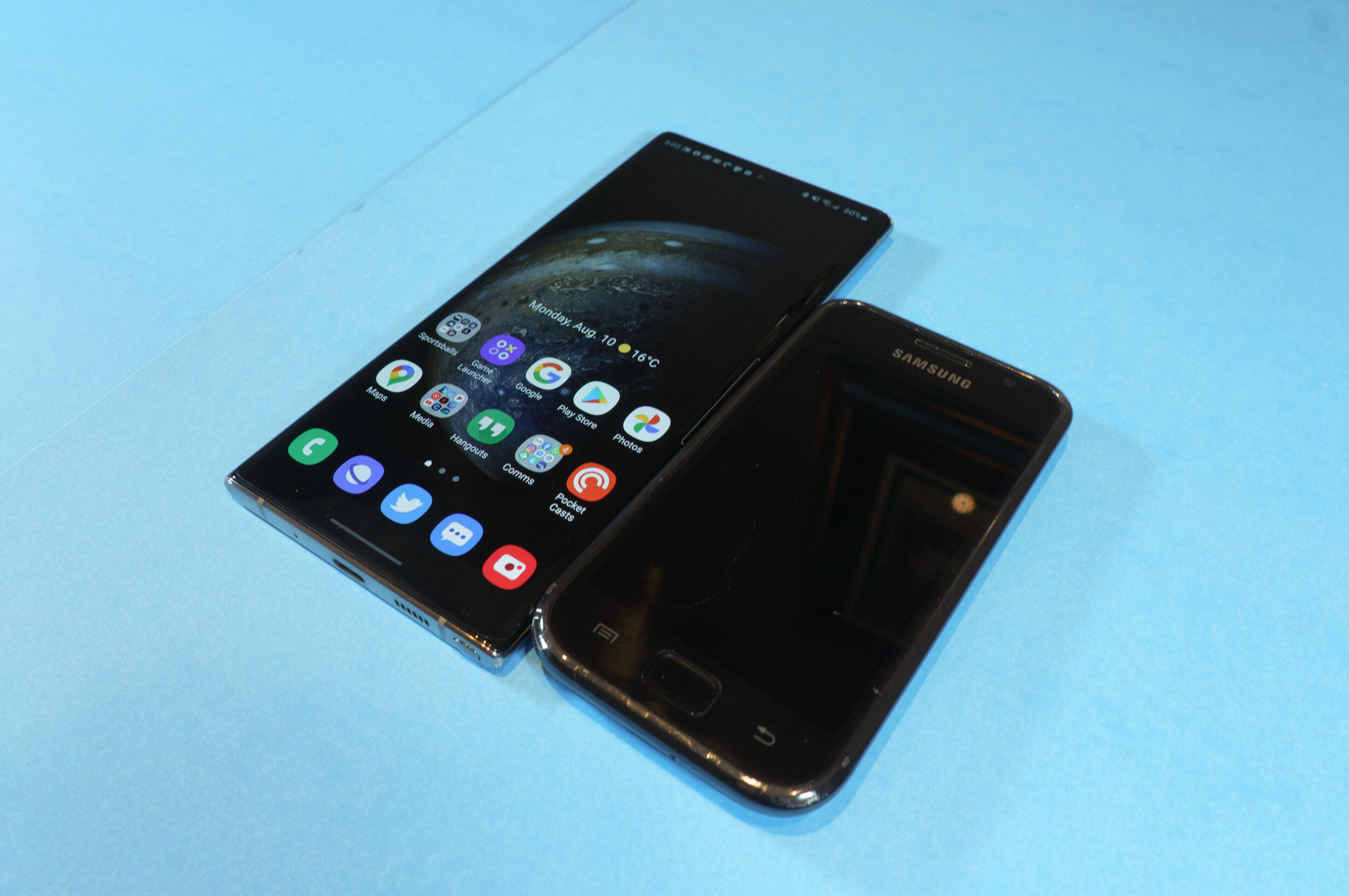
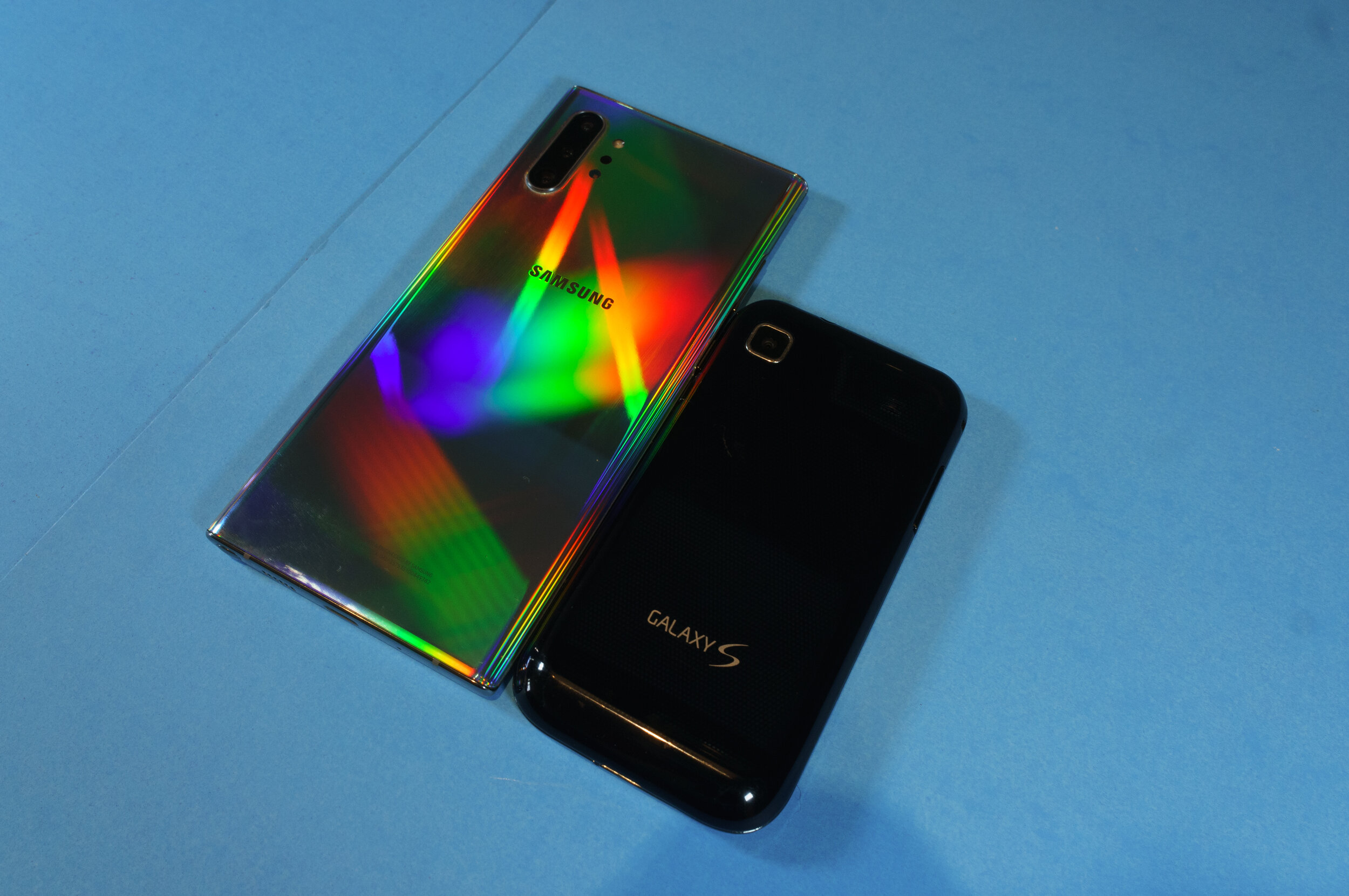
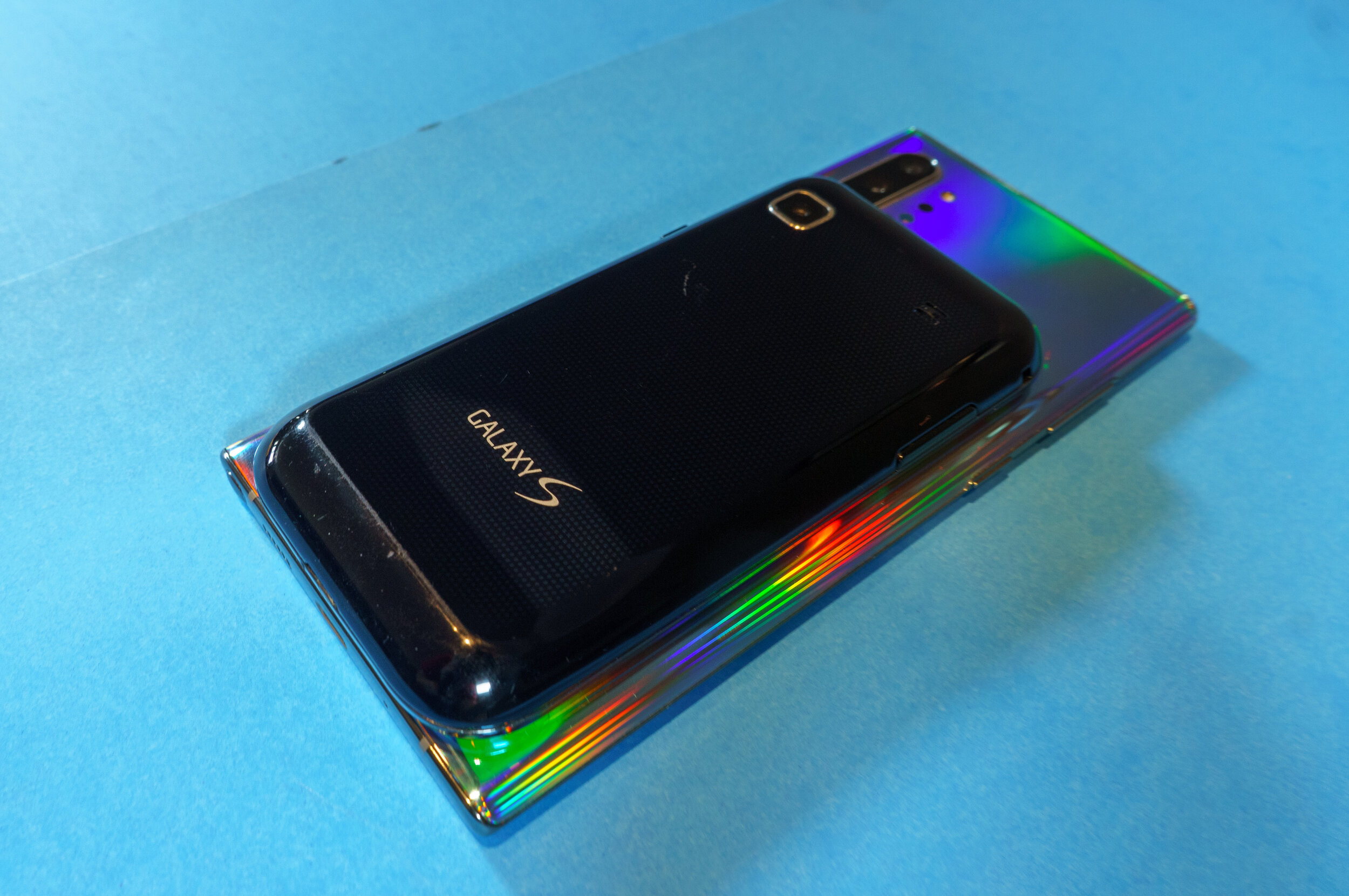


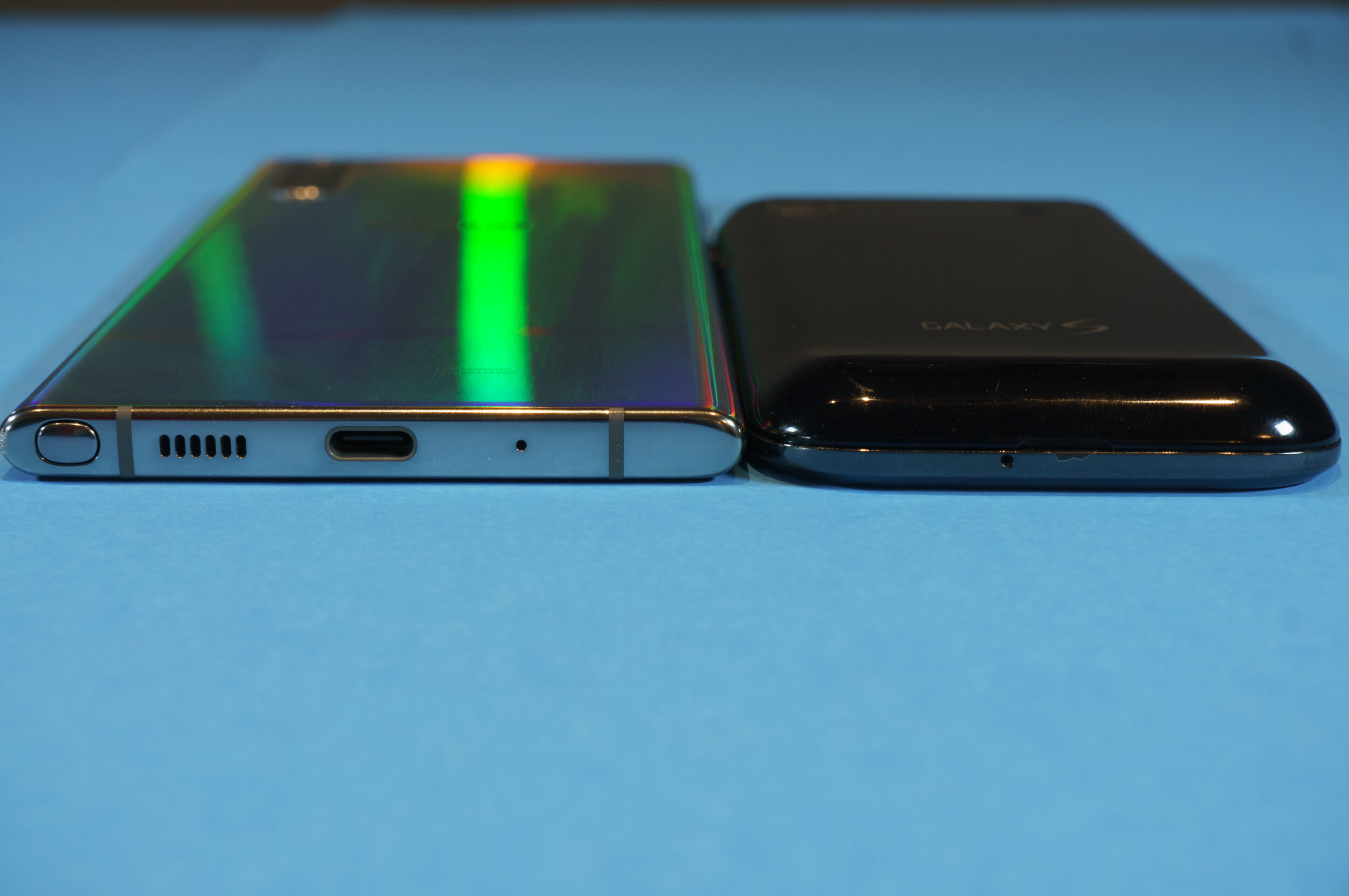
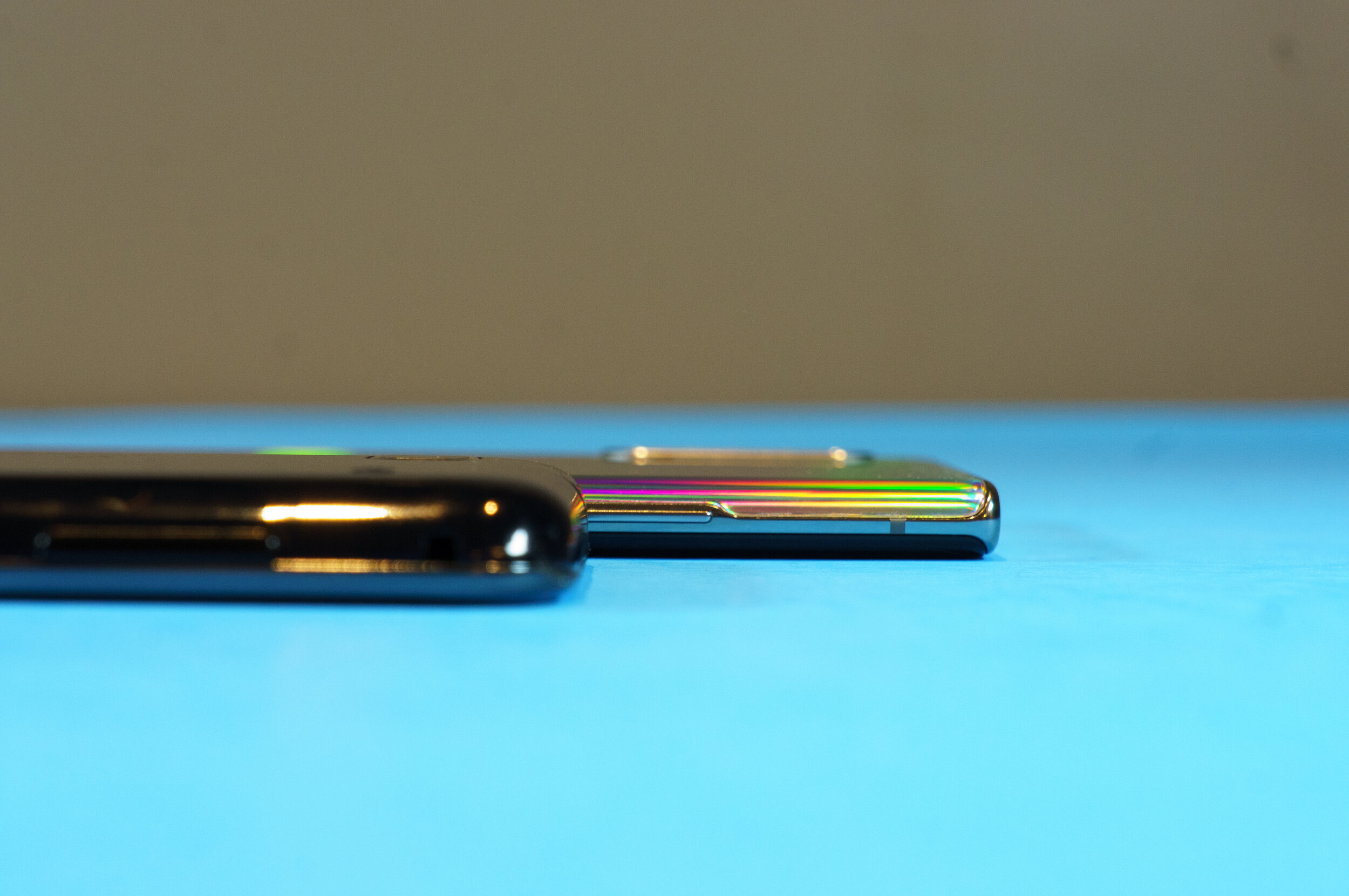
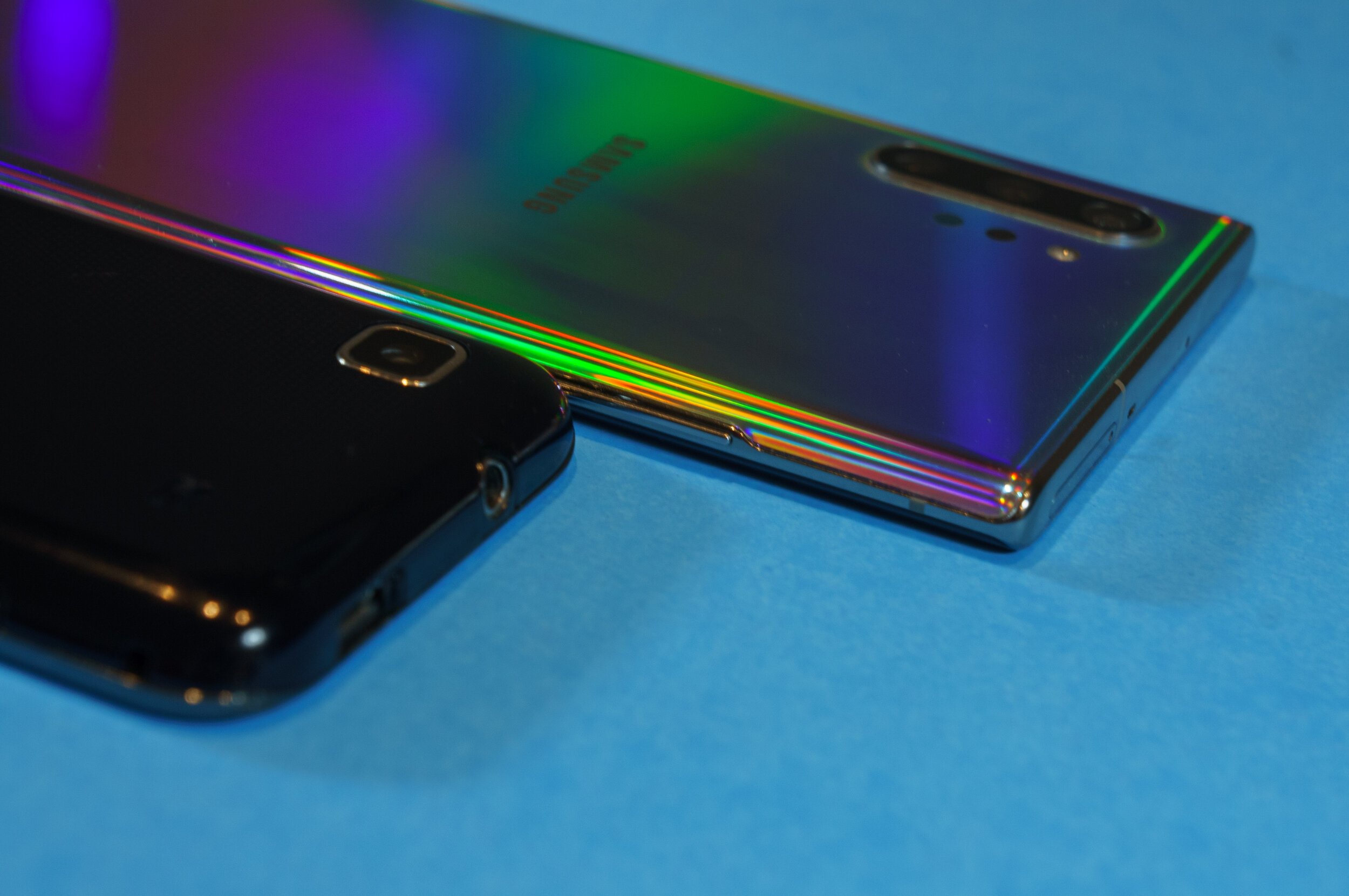


As you’ve seen in the pictures, the physical size comparisons are striking. The vibrant was one of the larger phones you could buy in 2010, and in today’s world, it is tiny, even smaller than the diminutive iPhone SE. But this was the pinnacle of technology of the time.
I’m still quite sad that I’m not able to explore the phone’s software. But I did manage to find a picture of what the phone looked like right around when I got it. No, I have no idea why I was taking a picture of my phone at 6:29 am, hoping that was just the clock on the wrong time. I’m glad I do have a couple pictures of it from then, because Android in the early 2010’s is way different than it is today. The Galaxy S Vibrant launched on Android 2.2 Froyo and was upgraded to Android 2.3.3 Gingerbread. The current version of Android is Android 10, with Android 11 just weeks away from launch. But the most interesting thing about the software comes from Samsung itself. Android phone makers have the ability to customise the look and feel of Android on their phones, and while today most customisation is relatively tame, the early to mid 2010’s were the wild west in terms of Android modifications. Samsung was perhaps the worst offender, with it’s “TouchWiz” UI bearing such a striking resemblance to Apple’s iOS that Apple sued Samsung over it. After years of legal battles Samsung eventually settled the case. The settlement proved a victory for Apple, but many believe that Samsung’s efforts to make their early phones look very similar to iPhones and iOS paved the way for them to become the largest smartphone manufacture in the world, a title it held until it was passed by Huawei in late 2019 and early 2020.
The Galaxy S Vibrant was my first Android phone. I was wowed by it, and it’s capabilities. The massive screen was great for watching videos, and Google maps had turn by turn navigation, replacing paper maps and a stand alone GPS. The massive 16GB of storage meant it could replace my iPod. I had owned a couple smartphones previously, and at that time had a work issued BlackBerry, but that was the first smartphone that really felt like a computer in my pocket. It wasn’t perfect, and the phone I use today is infinitely better in every measurable way, but I wouldn’t have that phone today if it wasn’t for that humble, 4 inch Galaxy S Vibrant.








